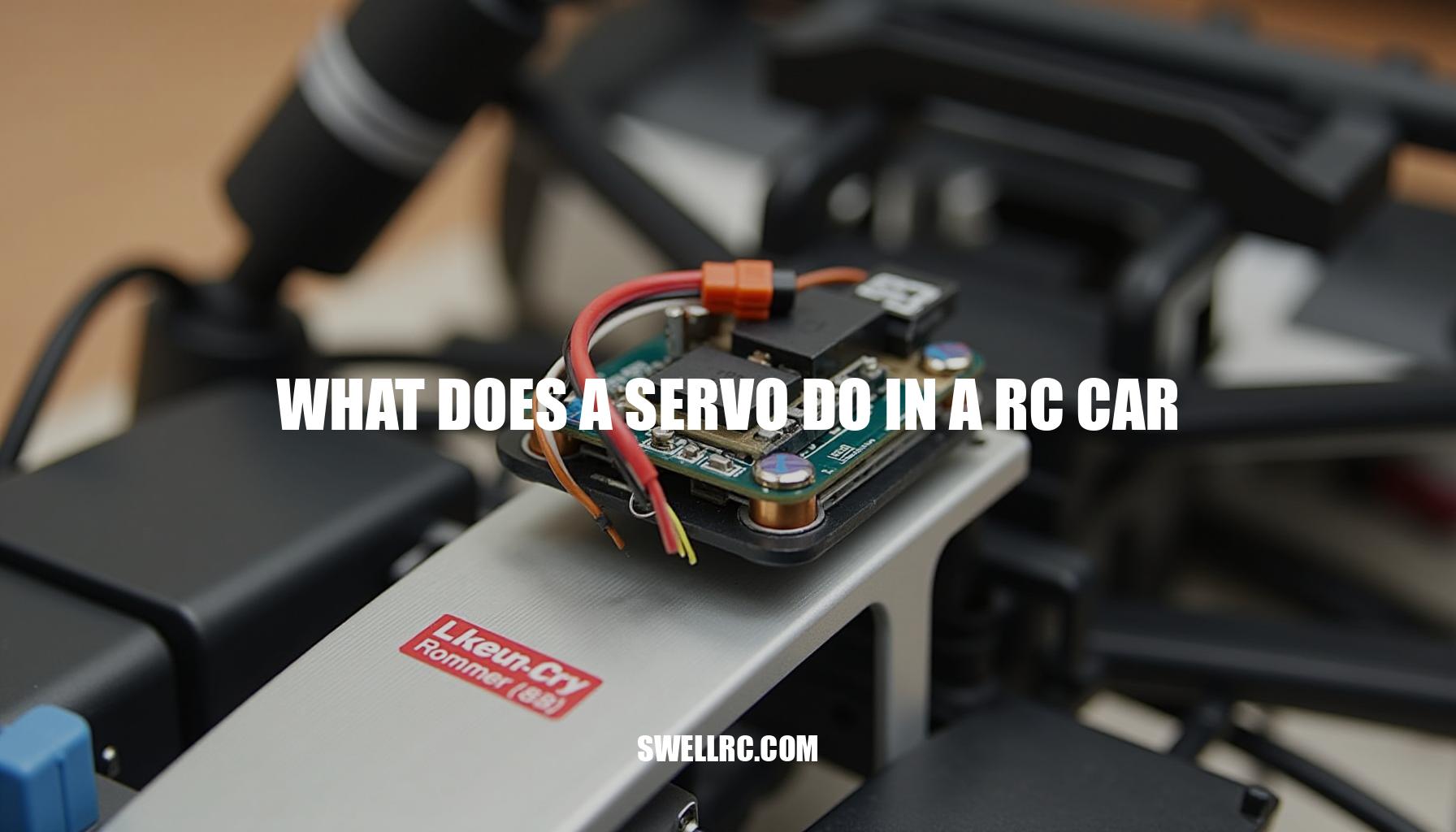What Does a Servo Do in an RC Car? A Comprehensive Guide
After countless hours tuning my RC rig, the real breakthrough wasn’t just upgrading to a hotter motor or stickier tires—it was understanding how much the RC servo motor influences the overall feel of your RC car steering. This small but vital component translates your transmitter inputs into precise mechanical movements, making your steering system responsive and smooth rather than twitchy and unpredictable. Simply put, an RC servo is a compact, self-contained actuator that rotates its output shaft to a commanded angle and maintains its position under load, enabling accurate control.
In the context of RC cars, the servo primarily manages steering through the servo horn and linkage. However, in some models, the same servo technology extends to managing throttle control or braking mechanisms. Connected to your servo receiver, the servo ensures your commands are executed seamlessly in real-time.
For a deeper dive into car-specific setups, visit RC car steering servo by SwellRC. If you’re curious about how servos function in other models like airplanes, check out RC airplane servos.
This article offers a breakdown of what an RC servo does, how it works, how to identify common issues, and guidance on selecting and tuning the right servo to match your driving style. Mastering your steering system through the right RC servo motor choice is key to transforming your RC car into a dialed-in machine that responds exactly how you want.
How Servos Work — The Heart of RC Control
At its core, a servo listens to tiny timing signals and converts them into measured rotation. Your transmitter sends commands to the receiver, which outputs pulse width modulation (PWM) to the servo—think of it as a rapid series of tiny “turn here” instructions. Inside the servo, four main parts do the magic:
- A small DC motor provides motion;
- A geartrain multiplies torque;
- A potentiometer measures the current position;
- A control board compares the target position to the actual position and corrects any error.
This feedback loop is why a good servo snaps to center and stays there, even when the wheels hit ruts or you load up the front end in a corner. A helpful mental picture: the servo is like your wrist turning a doorknob to a specific angle and holding it steady, even if someone pushes against it. This closed-loop system exemplifies advanced RC servo electronics ensuring steering precision in your RC vehicle.
Typically, connecting a servo to the receiver involves a three-wire plug (signal, positive, ground) plugged into the steering channel (often CH1), with the correct polarity matching the receiver’s pin layout to ensure accurate receiver signal interpretation.
For more context on the steering mechanics it drives, see how RC car steering works: https://www.swellrc.com/how-does-rc-car-steering-work/.
Types of Servos and Their Uses in RC Models
Not all servos feel the same on the track, and choosing the right type can transform your steering feel, precision, and durability dramatically. Understanding the pros and cons of digital vs analog servos is vital. Digital servos use high-frequency pulse updates to refresh the motor more rapidly, delivering stronger holding torque, faster response, and tighter centering—which is especially beneficial for racing and handling heavy tires.
On the other hand, analog servos are quieter, draw less current, and are more budget-friendly, making them ideal for casual or recreational running.
| Feature | Digital Servo | Analog Servo |
|---|---|---|
| Update Rate | High frequency (approx. 300Hz or more) | Lower frequency (approx. 50-60Hz) |
| Holding Torque | Stronger, better holding under load | Moderate, less effective under stall |
| Response | Faster, crisper transitions | Smoother but slower response |
| Current Draw | Higher, especially under load | Lower, more power-efficient |
| Typical Use Cases | Racing, heavy tires, high-precision applications | Casual running, budget builds, quieter operation |
Beyond the digital vs analog debate, consider specialized categories to tailor your build:
- High-Torque Servos: Essential for heavy 1/8 scale buggies, crawlers with large tires, or high-grip racing where the servo must securely hold line under demanding loads. These often feature metal gears and a robust design.
- High-Speed Servos: Perfect for nimble 1/10 touring cars and 2WD buggies where rapid transitions and razor-sharp turn-in are critical for performance.
- Waterproof/Sealed Servos: A must-have for trail rigs, bashers, boats, and any wet-weather running. Look for IP-rated cases and stainless hardware to ensure durability; model boat servos commonly incorporate these features to combat corrosion.
- Size and Weight Considerations: Micro and mini servos save precious grams in lightweight builds. For instance, micro servos are popular for RC airplanes where speed-to-weight ratio and precision define handling.
From a cross-application perspective, boats prioritize waterproofing and corrosion resistance, making model boat servos invaluable for marine environments. Meanwhile, airframes require servos with an excellent speed-to-weight ratio and precision; check out how to choose servos for an RC plane for in-depth guidance.
Real-world experience reveals that upgrading from a plastic-gear analog servo to a high-voltage digital metal-gear unit often feels like moving to power steering—expect quicker return-to-center, reduced wander, and enhanced confidence on corner entry. Whether you choose a high-torque servo for stamina, a high-speed servo for agility, or a waterproof servo for rugged conditions, selecting the right servo type tailored to your application will elevate your RC experience dramatically.
Troubleshooting and Common Servo Problems
If you’re experiencing servo jitter or delayed response on your RC car, it might show symptoms like jittering or twitching at rest, sluggish responses, overheating, grinding noises, or inconsistent centering with dead spots around neutral. These issues often indicate underlying problems with the servo or its setup.
Common causes include low voltage or a weak BEC, so begin by verifying that your receiver battery and ESC BEC output meet the servo’s voltage and current requirements. Loose or dirty connectors can also cause intermittent faults; reseat plugs, clean them with contact cleaner, and check the polarity carefully.
Signal interference or bad wiring is another culprit—ensure that the antenna is routed away from power leads and inspect cables for frays or pinches. Mechanical binding can be diagnosed by disconnecting the servo horn and confirming that the steering linkages and bellcranks move freely without resistance. Lastly, worn gears or stripped splines may require inspection for play and potentially a gear set or full servo replacement.
For effective servo calibration and to reduce signal interference, it’s crucial to bind and sync your radio system correctly.
Most modern radios allow you to rebind and recalibrate endpoints and neutral positions; detailed instructions on how to sync your RC car remote can be found at SwellRC. If your car is moving by itself without input, this could be due to servo glitches, receiver noise, or ESC issues—learn more at SwellRC troubleshooting.
When setting up, power on the car with the wheels mechanically centered and set the sub-trim to zero. Then adjust the links for true straight-ahead steering before setting endpoints.
This ensures proper servo alignment and avoids drifting or erratic movement. Safety also plays a key role: avoid stalling the servo against stops by setting EPA (end-point adjustments) to prevent overtravel. Keep gears lubricated if your servo design allows it, and prevent water ingress unless the servo is sealed.
Periodically check the servo horn screw torque and servo saver tension to maintain optimal performance.
Performance Tuning — Getting the Most from Your RC Servo
Small adjustments can truly transform your RC car’s handling, making it feel like a brand-new ride. Key tuning elements such as endpoint adjustment require setting the EPA so the knuckles reach full lock without binding, as excessive travel only drags the servo against the stops, reducing precision and risking damage. When positioning the servo horn, it’s essential to install it at a true 90 degrees to the servo case at neutral, employing sub-trim sparingly for fine-tuning to maintain optimal steering responsiveness.
Balancing torque settings versus speed depends heavily on your setup.
Heavy rigs and high-grip tracks benefit from increased torque to maintain control, while lightweight on-road cars might gain an advantage with faster steering speed. Incorporating an RC car gyro enhances steering stability by stabilizing yaw and reducing mid-corner corrections; more on this can be found at RC car gyro.
For power delivery, upgrading to high-voltage (HV) digital servos powered at 7.4–8.4V from a robust BEC output can significantly improve performance and reliability. Always verify your ESC/BEC specifications to support this voltage range safely.
Here’s a quick tuning checklist to streamline your setup:
- Free up the linkage mechanically before adjusting any radio settings to avoid masking binding issues.
- Center the servo mechanically, then employ sub-trim for precision alignment.
- Dial in steering rate and exponential curves to your driving style and track conditions.
- Set EPA symmetrically for both sides and verify no tire rub occurs at full suspension compression.
- Check the servo saver—ensure it’s tight enough to hold the steering line firmly but loose enough to protect gears during impacts.
- Test the setup thoroughly on track, making one change at a time to isolate effects and optimize feedback.
From my personal experience, back-to-back testing swapping a stock plastic-gear analog servo for a 25 kg-cm HV digital metal-gear servo cut my chicane corrections in half and made the car track straighter on throttle—proving that upgrading your servo setup can greatly enhance precision and overall driving confidence.
RC Servo Crossovers — Learning from Other RC Categories
Drawing lessons from RC airplane servos and model boat servos offers valuable insights for enhancing your car builds, especially in on-road and off-road applications. Airplane setups prioritize lightweight components and crisp centering accuracy at high speeds, making faster, tighter servos ideal for achieving superior control precision in high-speed racing. On the other hand, boats emphasize waterproofing, stainless hardware, and corrosion-resistant bearings—essential features that translate perfectly to crawlers and mud runners facing wet and harsh environments.
When selecting your servos, consider the materials: metal gears and aluminum cases not only withstand wear but also dissipate heat effectively and reduce slop, ensuring longer lifespan and consistent performance. Additionally, opting for digital servos with higher feedback speed improves holding power and responsiveness over rough terrain.
- Prioritize lightweight and centering accuracy for on-road speed.
- Opt for waterproof and corrosion-resistant components off-road.
- Choose materials that enhance durability and heat dissipation.
- Utilize faster control loops through digital servos for better feedback speed.
| Aspect | RC Airplane Servos | Model Boat Servos | Car Application |
|---|---|---|---|
| Focus | Lightweight, centering accuracy | Waterproofing, corrosion resistance | Speed and durability depending on terrain |
| Materials | Light metal alloys | Stainless hardware, sealed bearings | Metal gears, aluminum cases for heat dissipation |
| Control | Fast, precise responses | Reliable under wet conditions | Digital servos with quick feedback speed |
Revisit earlier experiences and references on both RC airplane servos and model boat servos to identify adaptable ideas for your next car build. The best results arise from curiosity—experiment with different setups, record lap times precisely, and let solid data guide your servo choices toward optimal performance.
Conclusion — Bringing It All Together
A servo converts your radio commands into precise, high-torque steering movement and holds that position under load, making it the hidden hero of confident, consistent driving.
Once you understand how servos read PWM signals, use feedback to lock position, and how torque and speed specifications shape feel, you can troubleshoot issues quickly and tune with purpose.
- Master servo tuning techniques such as proper centering and endpoint adjustments to optimize your steering performance.
- Learn to identify common problems and apply effective troubleshooting strategies for a smoother ride.
- Explore your upgrade path by selecting the right digital, high-torque, or waterproof unit suited to your needs.
Maintain a learning mindset by keeping notes and experimenting—your fastest setup is often just one smart adjustment away.
For a comprehensive understanding, dive deeper into the RC servo guide and elevate your knowledge to the next level.
Frequently Asked Questions
- What exactly does a servo motor do in an RC car?
It takes the receiver’s PWM signal and rotates its output shaft to a commanded angle, then uses feedback to hold that position under load. In cars, that translates into turning the wheels via the servo horn and linkage (and in some nitro models, actuating throttle/brake). - How does an RC servo impact steering performance?
Torque determines how well the car holds line under load, speed affects how quickly it responds to your inputs, and centering accuracy/deadband control precision. Digital, high-voltage servos typically offer stronger holding power and quicker response than basic analog units. - Can a bad servo cause my RC car to go by itself?
Yes. A failing servo, noisy signal, damaged wiring, or insufficient BEC voltage can cause random twitches or unintended steering. Receiver or ESC issues can also contribute, so diagnose power, signal integrity, and mechanical binding. - What are the signs of a failing RC steering servo?
Jittering at neutral, slow or inconsistent response, overheating, grinding noises, dead spots near center, excessive play, or a horn/spline that won’t stay tight are all red flags. - How do you choose the right servo for your RC model?
Match torque and speed to vehicle size and tire load, confirm voltage compatibility (HV vs standard), pick the right size/spline, and prioritize metal gears, waterproofing, and digital control for performance builds. Ensure your BEC can supply the required current. - What’s the difference between a digital and an analog RC servo?
Digital servos drive the motor with high-frequency pulses, giving faster response, better holding torque, and tighter centering—at the cost of higher current draw and price. Analog servos refresh more slowly, are cheaper, and draw less power but feel less precise. - How do RC servos compare between cars, planes, and boats?
Cars favor high torque, durability, and strong centering; planes prioritize speed, precision, and low weight; boats demand waterproofing and corrosion resistance with moderate torque. Duty cycles, materials, and sealing differ to match the environment.



